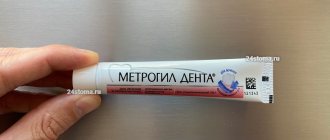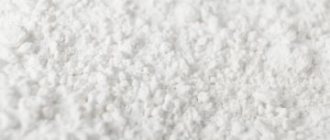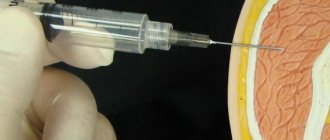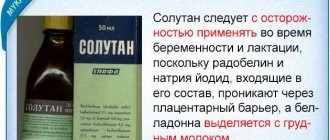In our turbulent times, every second person suffers from nervous system disorders: irritability, anxiety, insomnia, stress. It is for this reason that sedatives, sleeping pills and antidepressants are so popular. On the modern pharmacological market you can find dozens of medications that normalize the functioning of the nervous system, but many patients still prefer the long-known Corvalol.
The drug is based on menthol, ethylbromoisovalerate and phenobarbital and has a calming, antispasmodic effect. It is extremely popular due to its ease of use, low cost and effectiveness. However, this drug is potentially dangerous if taken incorrectly, as it contains artificial psychotropic substances and a high concentration of ethanol.
Corvalol drops: composition
The drug contains mint oil, ethyl bromizovalerianate and phenobarbital.
Peppermint is known for its ability to have a calming effect on the nervous system. In addition, mint helps blood vessels dilate.
Phenobarbital is a special component that enhances the effect of other substances that make up Corvalol. In particular, it contributes to the rapid manifestation of a sedative effect on the central nervous system and the body as a whole. Thanks to phenobarbital, Corvalol makes it easier for a person to go to sleep, which is especially important after suffering stress.
Ethyl bromizovalerate is responsible for the antispasmodic effect accompanied by a strong sedative effect.
Drops contain alcohol as an auxiliary component.
Adverse reactions
Corvalol in tablets and drops can cause negative effects:
- dizziness;
- excessive sleepiness;
- loss of performance;
- rash, itching;
- gastrointestinal disorder;
- labored breathing.
With prolonged use of the drug, there is a possibility of accumulation of bromine in the body, disruption of osteogenesis, development of symptoms of bromism, such as rhinitis, acne, conjunctivitis, lacrimation, stress, depression of the central nervous system.
Negative consequences, as a rule, disappear without a trace after reducing the dose or completely stopping the drug.
How many drops of Corvalol to take?
Most often you can find Corvalol in drops. It is sold in glass vials equipped with a dropper. Therefore, the question most often arises of how many drops you need to drink in each specific case. There is an opinion that it is correct to take into account the following calculation: 1 drop per 1 year of life. However, medicine says that this is wrong.
A single dose should not exceed 30 drops. Corvalol concentrate must be dissolved in a sufficient amount of water. The more liquid you take for dilution, the less pronounced the taste of the medicinal solution will be. In special cases, the single dose can be increased to 50 drops.
You can repeat the reception up to three times a day. It is important that the daily dose does not exceed 100 drops.
It is not recommended to take Corvalol as a course without consulting a doctor. Unlike long-term use, a one-time use during stress does not pose a danger to humans, however, constant use of the drug can also have a negative effect on the body.
Contraindications
The manufacturer's instructions list the following contraindications for the use of the drug:
- intolerance to the components of oral drops/tablets;
- increased sensitivity to bromine;
- severe forms of CHF;
- hepatic porphyria.
Preparations containing phenobarbital myocardial infarction (in the acute stage of development), severe arterial hypotension , myasthenia gravis , depression , diabetes mellitus , drug or drug addiction, alcoholism, obstructive syndrome , diseases of the respiratory tract with shortness of breath .
Caution should be exercised when prescribing the drug to patients diagnosed with epilepsy or liver pathologies .
Overdose
Due to the fact that the drug contains bromine compounds, an overdose can provoke:
- depression;
- rhinitis;
- inflammation of the conjunctiva;
- lack of coordination;
- drug dependence.
With prolonged use, patients note the appearance of dizziness, increased drowsiness, and the appearance of allergic reactions.
With liver failure, a rash may appear, accompanied by severe itching. Each meal will make the rash worse, even if Corvalol is stopped. Patients with phenobarbital poisoning note the appearance of edema, which indicates an exacerbation of renal failure. If such a reaction occurs, the patient should urgently call a doctor and, if necessary, be hospitalized.
special instructions
phenobarbital in Corvalol can cause the development of Lyell's syndrome or Stevens-Johnson syndrome , which is most likely in the first weeks of using the drug.
The drops contain phenobarbital and ethanol (56 vol.%). The alcohol concentration in the minimum dose of the drug (15 drops) is 254 mg, which corresponds to 2.7 ml of wine or 6.4 ml of beer.
When taking these substances, the following are possible:
- coordination problems;
- impaired speed of psychomotor reactions;
- dizziness;
- drowsiness.
In this regard, the answer to the question whether you can drink Corvalol while driving is unequivocal - you can’t. During treatment with the drug (in any dosage form), you should also avoid working with mechanisms and activities that require increased attention and high speed of motor and mental reactions.
Is Corvalol harmful - the benefits and harms of the drug
Everyone knows what Corvalol is needed for. The effectiveness of the drug is evidenced by a fairly large number of reviews left by patients. However, recently more and more information has appeared that the drug can not only treat, but also cause harm to the body.
So, why is Corvalol harmful? Contained in tablets and drops, ethyl bromizovalerianate is an antispasmodic , which, depending on the dose taken, can have a sedative or hypnotic effect . The dose required to develop a hypnotic effect depends on the individual characteristics of the body.
Phenobarbital entering the body when taking a standard dose of Corvalol (15-20 drops) provokes vasodilation and causes a mild sedative effect , without having a hypnotic effect .
Peppermint oil causes a reflex vasodilation and antispasmodic effect , however, when consumed in a dose exceeding 25 mg, it inhibits intestinal motility and causes constipation.
In most countries, substances that provide the therapeutic effect of Corvalol are considered controlled substances (in the Russian Federation included in List III, which is the basis for restricting its circulation) and are prohibited for import. In particular, the drug is prohibited for import and sale in the United States and Lithuania.
According to some narcologists, phenobarbital is a drug, and its use should be avoided if possible due to the risk of developing addiction and dependence on the drug.
When used regularly in high doses, phenobarbital causes cognitive impairment (speech impairment, short-term memory impairment, unsteadiness of gait), serious neurological disorders and withdrawal symptoms , and suppresses sexual function.
Long-term use of Corvalol is also dangerous due to the risk of possible accumulation of bromine in the body and the development of bromine poisoning.
Symptoms of poisoning can be mild, moderate or severe. The lungs manifest themselves in the form of: general weakness, drowsiness, lethargy, decreased muscle strength, absent-mindedness, blurred speech, confusion, apathy, ataxia, conjunctivitis, depressive mood, the appearance of purpura and acne , runny nose .
Consequences of moderate poisoning: pathological increase in sleep duration, drooling, increase in muscle weakness up to the development of paresis , decrease in blood pressure, decrease in the volume of urine excreted, dilated pupils.
, barbituric coma develops . A person develops respiratory failure, reflexes become undetectable, there is no consciousness, and acute cerebrovascular insufficiency develops, the signs of which are:
- drop in blood pressure;
- the appearance of wheezing in the lungs audible at a distance;
- tachycardia;
- increasing bluishness of the skin, which spreads from the tips of the ears, nose, nasolabial triangle and ends with general cyanosis .
The progression of heart failure often ends with pulmonary edema .
The lethal dose of the drug is 0.1-0.3 g/kg (on average about 20 g). of phenobarbital is fatal .
In case of mild poisoning, it is enough to rinse the patient’s stomach (to clean rinsing water), give him an enterosorbent (any, if he is not intolerant) in a dose equal to a third of the highest daily dose. It is also advisable to use saline laxatives, a cleansing enema, and take an enveloping drink.
Due to the danger of a rapid increase in the severity of the condition, you should definitely call an ambulance.
In case of severe intoxication, when the patient has signs of lack of cardiac activity, an indirect cardiac massage is performed and artificial respiration is performed before the doctor arrives.
The consequences of poisoning, even with timely assistance, can be quite serious - from severe forms of dermatitis to acute cardiac, respiratory or renal failure .
The largest number of deaths due to drug poisoning is observed precisely from drugs that contain barbituric acid . The severity of the consequences is determined by the dose of the substance taken, the severity of the poisoning, and the timeliness of the measures taken.
Does Corvalol reduce blood pressure?
When it comes to treating patients suffering from blood pressure fluctuations, the question “Does Corvalol increase blood pressure or decrease it?” very relevant.
Research by scientists has shown that Corvalol lowers blood pressure. Therefore, in emergency situations, it can be used as an alternative to special medications that are intended for the treatment of arterial hypertension .
How to drink and how many drops to measure at high blood pressure?
If your blood pressure has risen sharply and there is no other antihypertensive drug in the house, doctors recommend measuring 45 drops of Corvalol oral solution in 100 ml of hot water and drinking this medicine in one gulp. Improvement is usually noted after about half an hour.
How to prepare a remedy for heart and vascular diseases at home?
valerian , Corvalol, hawthorn, motherwort, mint and eucalyptus are very effective for heart pathologies , hypertension
To prepare the medicine, alcohol tinctures are used in the following proportions: tinctures of valerian, motherwort, peony and hawthorn - 100 ml each, tincture of eucalyptus - 50 ml, tincture of mint - 25 ml, Corvalol - 30 ml, clove spice - 10 columns.
All ingredients are poured into a dark glass bottle, the bottle is sealed and placed in a dark place for 2 weeks. The medicine should be infused at room temperature.
Take the product 3-4 times a day, half an hour before meals, 30 drops for each dose, after diluting the indicated dose in 0.5 glasses of water. The last dose should be before bedtime. They take the medicine in courses lasting 30 days, with weekly intervals between them. Treatment is continued until improvement appears.
The combination of motherwort , hawthorn and valerian helps improve cerebral circulation , eliminate the consequences of stroke and heart attack , improve hematopoiesis, and also prevent blood clots .
Special reactions to the components of the drug
The following negative reactions were observed in patients taking Corvalol:
- nausea;
- vomit;
- constipation;
- feeling of heaviness in the stomach;
- increased weakness;
- dizziness;
- hallucinations;
- headaches in the frontal lobe;
- anemia;
- thrombocytopenia;
- difficulty breathing.
pharmachologic effect
The therapeutic effect of the tablets is due to their composition. The drug has a calming effect, helps relieve emotional stress, and promotes the rapid onset of natural sleep. Peppermint essential oil expands the lumen of veins and capillaries, restores blood flow. This helps relieve spasms and normalize blood pressure. Once on the mucous membrane of the mouth, the oil acts primarily on the blood vessels of the brain and heart muscle. In addition, mint normalizes the peristalsis of the digestive organs, relieving a person of flatulence and other unpleasant symptoms.
Is it possible to use Corvalol for VSD?
Vegetative-vascular dystonia is not a diagnosis, but this condition well characterizes the well-being of many people. It is accompanied by fatigue, dizziness that occurs with a sudden change in body position, including darkening of the eyes. Dystonia is a condition of blood vessels in which they do not have time to respond to a change from a horizontal to a vertical body position, and also cannot expand in a timely manner to allow more blood to pass through during sports activities.
In this case, the effect of Corvalol is explained by several factors:
- mint makes blood vessels more elastic;
- bromine reduces anxiety, which increases the symptoms of VSD;
- phenobarbital enhances the effect of the other two components, improving sleep.
Precautionary measures
As indicated in the instructions for use of Corvalol in drops, the drug is prohibited in the following cases:
- Intolerance to the ingredients of the drug.
- Allergy to bromine.
- Chronic heart failure (severe).
- Hepatic porphyria.
Corvalol is contraindicated in case of allergies not to its components
In addition, drugs containing phenobarbital are prohibited from being taken by patients with heart attack (acute form), low blood pressure, stress, or diabetes. The use of Corvalol is contraindicated in patients with dependence on drugs, medications, or alcoholic beverages. This restriction applies to patients with impaired air flow through the bronchi due to narrowing or blocking of the air ducts, as well as for diseases of the respiratory organs with shortness of breath.
Under the supervision of a doctor, patients with epileptic seizures and severe liver diseases take a sedative. The tincture is allowed to be given to children only for medical reasons, and it is important to constantly monitor their condition.
Negative effects of tincture on humans:
- epigastric discomfort, difficulty defecating, nausea, vomiting, impaired liver function;
- neuromuscular disorders, involuntary eye movements of high frequency, slow reaction speed, dizziness, hallucinations, etc.;
- allergic reactions (including angioedema);
- disturbance of blood composition (decrease in the concentration of granulocytes, platelets, anemia);
- difficulty breathing;
- hypertension, bradycardia.
Long-term use of Corvalol is harmful to health, in which case the likelihood of osteogenesis imperfecta (impaired bone formation) and the manifestation of symptoms of bromism (chronic bromine poisoning) increases: inhibition of the nervous system, stress, ataxia, disorientation, etc. If such signs appear, you should stop taking it drops and consult a doctor.
How to take Corvalol for herpes
The effectiveness of Corvalol against the herpes virus, which manifests itself on the lips in the form of ulcers, has been noted. It is important to use Corvalol at the first sign of a painful sore on the lips. In order to prevent the disease from developing, it is necessary to wet a piece of cotton wool or one end of a cotton swab with Corvalol and apply it to the ulcer. A tingling sensation will indicate that the drug has begun to destroy the ulcer. Alcohol, having a drying effect, will speed up recovery. You need to repeat the procedure several times a day until the tingling stops.
Alcohol compatibility
Alcohol enhances the effect of Corvalol. The drug is harmful for alcoholic patients.
Corvalol and alcohol: consequences of simultaneous use
Concomitant use of the drug with alcoholic beverages primarily causes damage to hepatocytes and the development of a disulfiram-ethanol reaction.
Once in the blood, alcohol increases heart rate, increases blood pressure and excites the nervous system. Corvalol is taken to reduce high blood pressure and calm the heart. Thus, the combination of the active components of the drug with alcohol provokes an imbalance and overload of the body.
Peppermint oil has a vasodilating effect and reduces blood viscosity. Since alcohol enhances the effect of the drug, drinking it in large quantities after taking Corvalol can provoke the development of internal bleeding and hemorrhage in the brain.
Another possible consequence of using this combination is cardiac arrest.
Repeated mixing of Corvalol with alcoholic beverages can cause dependence, much stronger than just dependence on alcohol.
This is due to the fact that one of the components of the drug is phenobarbital barbituric acid derivatives , which, with prolonged use, is addictive and provokes the development of drug dependence.
Is it possible to drink Corvalol with a hangover?
If you have a hangover , the use of Corvalol is not only inappropriate, but also extremely dangerous. By accelerating the course of all metabolic processes in the body due to the active release of liver enzymes, the drug thereby promotes faster absorption of alcohol in the blood and enhances its destructive effect.
There is also an increase in the sedative effect, which in turn leads to a more pronounced hangover syndrome.
Drinking alcohol also worsens the symptoms characteristic of an overdose of Corvalol: severe weakness, inability to think coherently, apathy. The possibility of unexpected reactions cannot be excluded.
Is it possible during pregnancy?
Despite the fact that Corvalol is a mild sedative medicine, it is not recommended to take it while pregnant. The risk of developing negative consequences in this situation outweighs the benefits. In the first trimester of pregnancy, taking any sedatives is prohibited. The active components of the drug can negatively affect the developing nervous system of the fetus. In subsequent trimesters, the methods and dosage of taking the medication must be discussed with your doctor.
The prescription of Corvalol during pregnancy is carried out exclusively by a doctor.
conclusions
Corvalol is quite safe, has no side effects when the dose is correctly selected. It is used in the complex treatment of problems of the nervous and cardiovascular systems, and also as a symptomatic remedy for insomnia and pain.
The drug is used not only in adults, but also in adolescents and young children. Indications for use, duration of therapy and dose of Corvalol for children are determined by a pediatrician or cardiologist. If side effects or symptoms of overdose or allergic reactions occur, you should immediately stop taking the drug and seek medical help.
Use of Corvalol in newborns and infants
Despite the relative safety of the drug, Corvalol is prescribed to newborns quite rarely and with great caution. Parents sometimes give medicine for the baby's restlessness, poor sleep, and frequent painful colic. Also used for elevated body temperature (for example, after vaccination), and for intestinal spasms.
It must be remembered that Corvalol is used for children only in drops. This form of release of the drug contains ethyl alcohol, so frequent uncontrolled use in an infant is very dangerous for health: allergies, intoxication, and drug dependence may occur.
Pediatricians do not recommend taking Corvalol to children under 12 years of age, but in some cases it is prescribed from 3 years of age. For young children, there are other, safer drugs that can cope with the problem of anxiety, spasm, and hyperthermia.
Analogues of the drug
The following drug analogues have a therapeutic effect similar to Corvalol:
- Valocordin drops - a phenobarbital-based drug used for insomnia, neuralgic disorders, sinus tachycardia, early stages of hypertension and other diseases;
- Corvaltab tablets are a drug that has a vasodilator effect, a moderate antispasmodic, and sedative effect. The drug is based on phenobarbital and includes mint oil and other auxiliary components. Indications for use include insomnia, tachycardia, the initial stage of hypertension, intestinal spasms caused by emotional outbursts, and other conditions;
- Reladorm is a combined medication. Its active components help normalize sleep, relieve vascular spasm and nervous tension. The medicine contains diazepam, calcium cyclobarbital;
- Barboval drops – have a hypotensive, antispasmodic, and coronary dilation effect. For sleep disorders, conditions accompanied by tachycardia, high blood pressure, and emotional stress, it is recommended to drink 10–15 drops of the medicine diluted in water. Sometimes the dose can reach up to 25 drops as prescribed by a doctor;
- Corvaldin drops are a drug that has a sedative, antispasmodic, and hypnotic effect. The drug is based on ethyl bromizovalerianate, phenobarbital and mint oil. Corvaldin is indicated for insomnia, irritability, tachycardia, spasms of the intestinal tract and some other conditions;
- Corvalol phyto - contains motherwort, ethyl bromizovalerate, mint oil and other components. The product has an antispasmodic and sedative effect. Taking the drug slows the heart rate while increasing heart contractions. Medicine is prescribed for diseases of the heart and blood vessels, nervous disorders, insomnia and other conditions;
- Corvalcaps capsules - contains α-bromoisovaleric acid, which has a calming, sedative effect and helps eliminate smooth muscle tone. Phenobarbital relieves nervous tension and promotes rapid sleep. Corvalcaps is used for conditions associated with sleep disorders, nervous feelings, tachycardia, spasm of the coronary vessels, the initial stage of hypertension and other diseases.
Corvalcaps is one of the analogues of Corvalol, which has a similar composition and therapeutic effect
Important! Analogues should be selected based on an examination of the patient and the diagnosis made by the attending physician; self-medication can cause lasting harm to the body.









